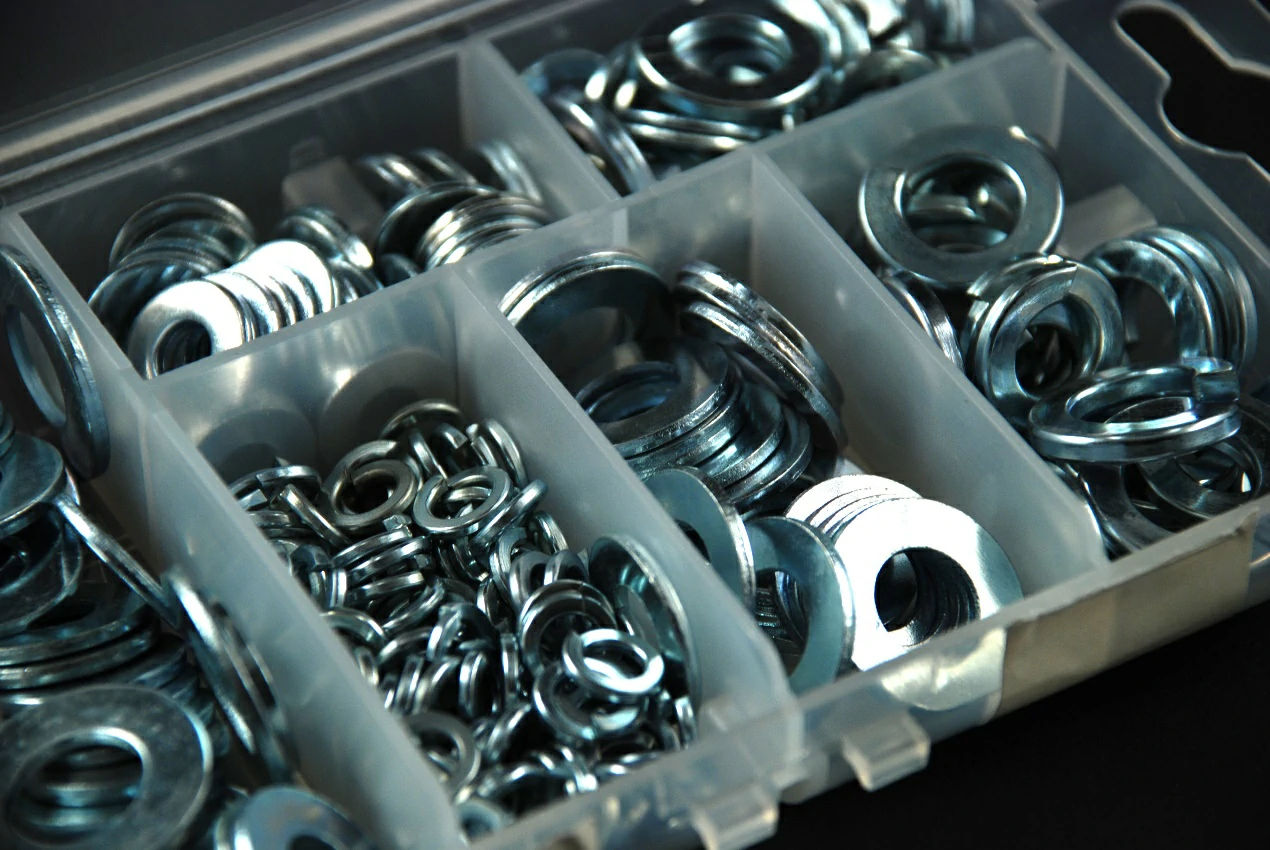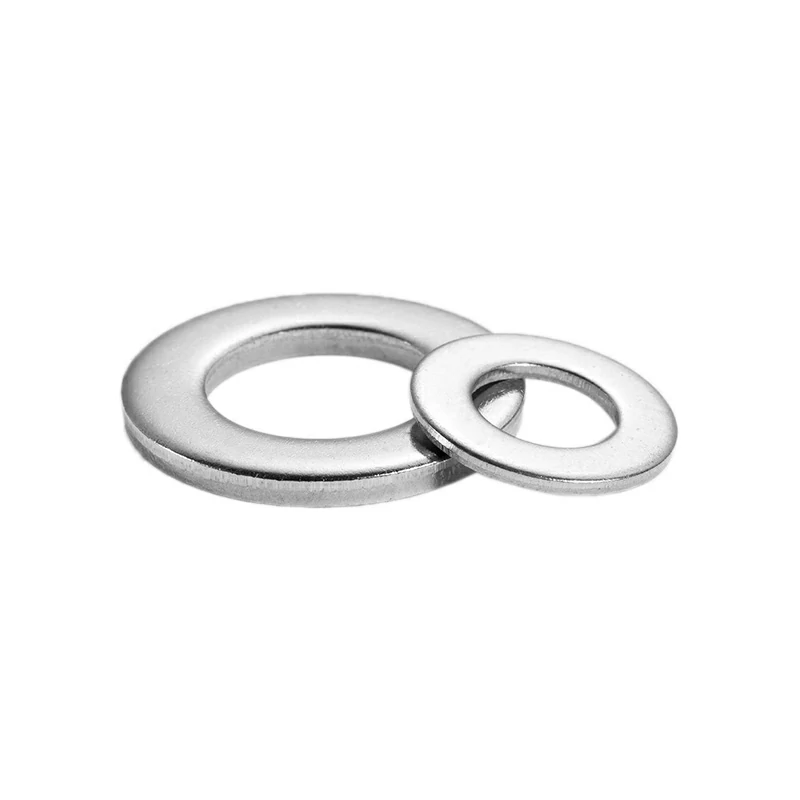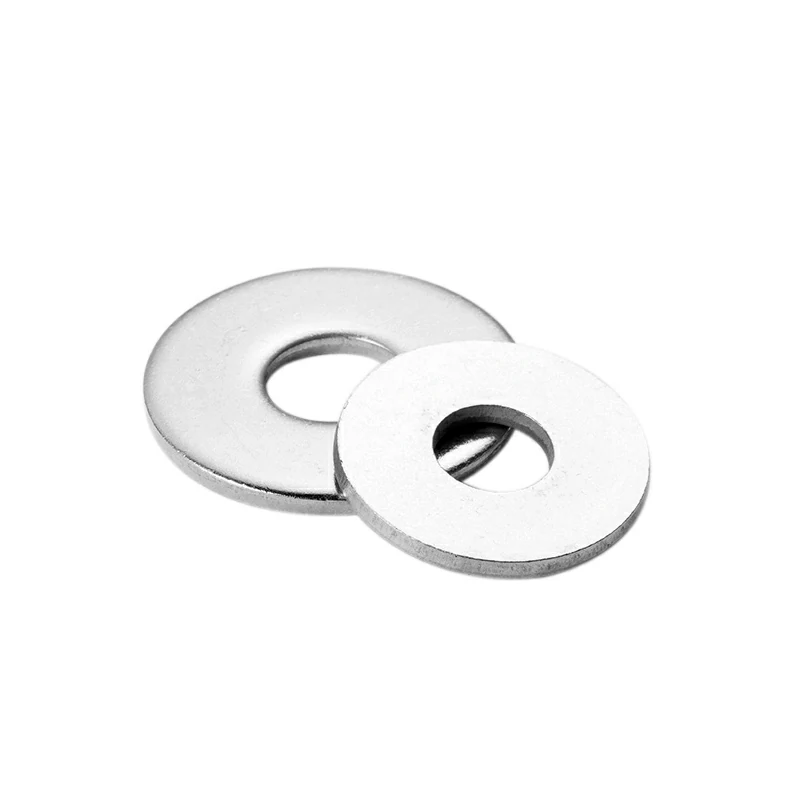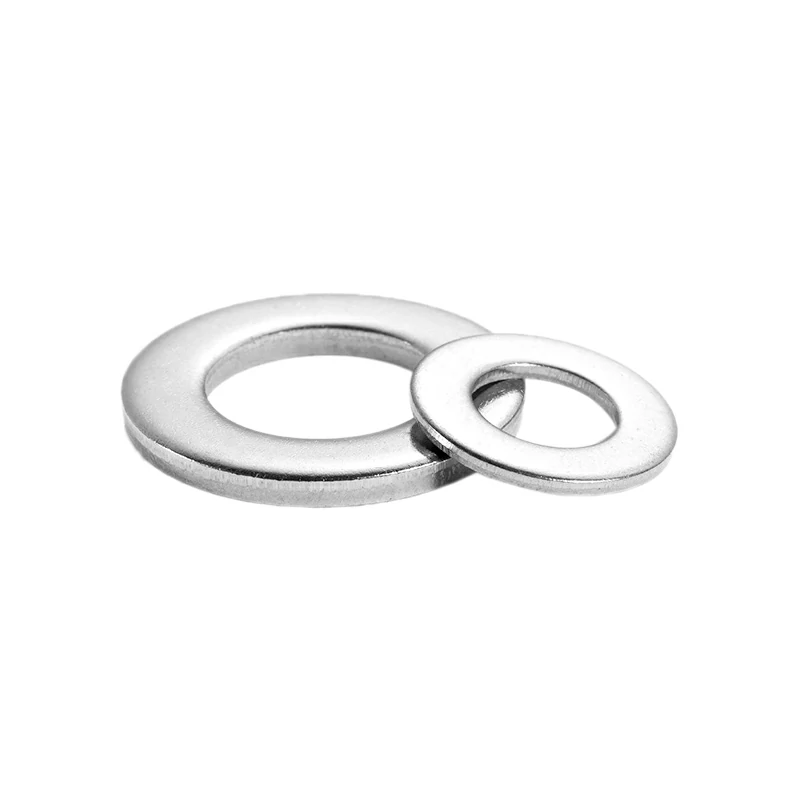Flat washers and spring washers (often called lock washers) are two essential components in fastening systems, each serving distinct purposes to improve the effectiveness of bolts and screws in various applications. While both washers are used to enhance the performance and longevity of fasteners, they function in different ways, and knowing when and how to use them can make a significant difference in the reliability and durability of your assembly.
What is a Spring Washer?
A spring washer is designed with a specific shape that provides anti-loosening and vibration resistance. These washers are ideal for high-stress, dynamic environments where fasteners are exposed to vibration, thermal expansion, or fluctuating loads. The spring-like action of the washer helps maintain constant tension between the fastener and the mating surface, preventing the fastener from loosening over time.
Types of Spring Washers:
Split Lock Washers (Helical): These washers have a single coil with a split, providing a spring action that bites into both the fastener and the surface, preventing loosening.
Belleville Washers (Conical Disc): These washers are conical in shape and offer a high load-bearing capacity, providing strong spring tension.
Wave Washers: With a wavy profile, these washers are used for lighter spring action in compact spaces or smaller loads.
Tooth Lock Washers (Internal or External): Featuring teeth that dig into the fastener and surface, these washers resist rotation and prevent loosening.
What is a Flat Washer?
A flat washer is a simple, thin, circular disc with a hole in the center. It serves primarily to distribute the load of a fastener (bolt, screw, or nut) evenly over a larger surface area. This helps prevent damage, such as indentation or marring, to the material being fastened, especially when dealing with softer materials like wood, plastic, or aluminum.
Unlike spring washers, flat washers do not provide any spring tension or anti-loosening benefits. They are mostly used for load distribution, surface protection, or spacers and can also help reduce friction during tightening.
|
Feature |
Spring Washer |
Flat Washer |
|
Primary Function |
Prevents fasteners from loosening due to vibration or dynamic loads. |
Distributes the load of a fastener over a larger surface area. |
|
Shape |
Has a helical, curved, or wavy design to provide spring-like action. |
Simple, flat, and circular design. |
|
Material |
Typically made from hardened steel for durability. |
Can be made from various materials, including steel, stainless steel, brass, or plastic. |
|
Applications |
Used in high-vibration or high-stress applications, such as engines, machinery, and vehicles. |
Common in general applications like plumbing, furniture, and electrical devices. |
|
Resistance |
Excellent at resisting loosening, especially in high-vibration environments. |
No resistance to loosening, used for surface protection and load distribution. |
When to Use a Spring Washer and a Flat Washer
Spring Washer:
Ideal for applications where fasteners are subjected to frequent vibration or dynamic forces.
Commonly used in engines, machinery, and automotive applications.
Effective in preventing loosening caused by thermal expansion, contraction, or constant movement.
Flat Washer:
Perfect for general-purpose fastening needs.
Used in applications where load distribution and surface protection are required, such as furniture assembly, plumbing, or electrical installations.
Helps prevent damage to soft materials and makes the fastening process easier by reducing friction.
Can Flat Washers and Spring Washers Be Used Together?
Yes, flat washers and spring washers can often be used together, especially in applications where both load distribution and anti-loosening features are needed. Here’s the typical order of assembly:
Flat Washer: Place the flat washer directly against the material surface to distribute the load evenly and protect the surface from damage.
Spring Washer: Place the spring washer between the flat washer and the bolt head or nut. This provides continuous tension, preventing the fastener from loosening due to vibrations or thermal changes.
By combining both washers, you ensure the fastener is both securely tightened and protected from loosening.
Choosing the Right Washer for Your Application
The choice between a flat washer and a spring washer, or the decision to use both, depends on the specific requirements of your application. Consider the following factors:
Vibration Resistance: If your application involves frequent movement or vibrations, a spring washer is the best choice to prevent fasteners from loosening.
Load Distribution: For general fastening tasks that require even load distribution and surface protection, flat washers are ideal.
Material and Environment: Depending on the material being fastened (e.g., metal, plastic, wood) and the environment (e.g., high moisture or chemical exposure), you may need specific materials such as stainless steel or brass.
Conclusion: Flat Washers and Spring Washers in Fastening Systems
Both flat washers and spring washers are crucial components in ensuring that fasteners perform optimally and securely in a wide variety of applications. While flat washers are best for load distribution and surface protection, spring washers are ideal for preventing loosening due to vibrations and dynamic forces. By understanding the key differences between the two, you can make an informed decision and select the best washer for your needs.
Shop Quality Washers for Every Need
Whether you need spring washers, flat washers, or other fastening solutions, make sure you’re using the right component for the job. Explore our range of high-quality washers for every application, and ensure your projects are secure and reliable.




